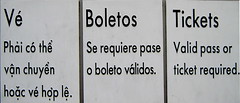
Teaching about immigration can be tough because students come to our classrooms with the battle lines already drawn and believing their minds are already made up. We know, for example, that “the border” occupies a large conceptual space in our collective minds and that certain racialized populations suffer from perceptions of illegality. I have successfully re-centered my classroom conversation in a more constructive direction by starting with something most students seem to have a complete lack of information about: how the U.S. immigration system actually works.
Below I share some resources and ideas for leading an hour long discussion on “everything you wanted to know about the immigration system but were afraid to ask.” The activity below would be a great fit for any course where you are going to spend several class days on migration in the United States: Global Sociology, Social Problems, Migration, Race & Ethnicity, or Crime & Deviance. This activity is intended to take advantage of the fact that a classroom is a special place designated for learning, where everyone (including the instructor) can always learn something new without feeling embarrassed of our ignorance.



